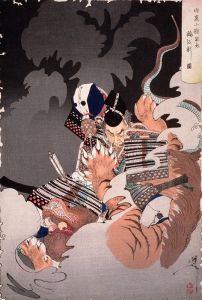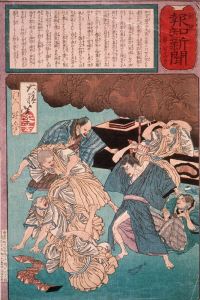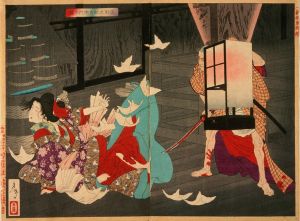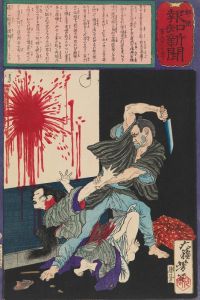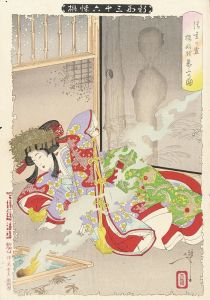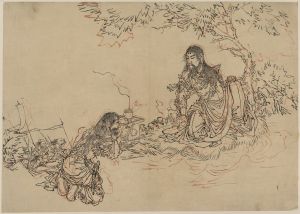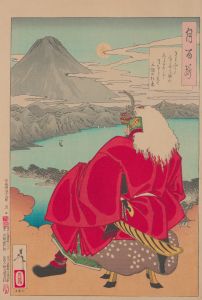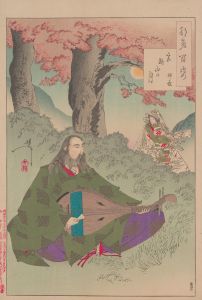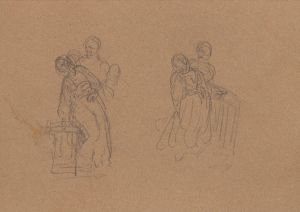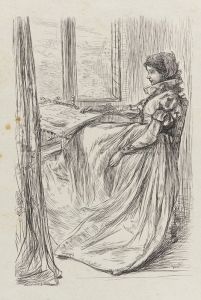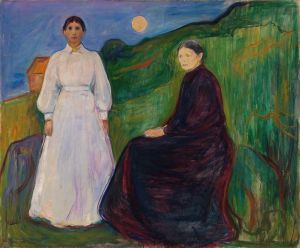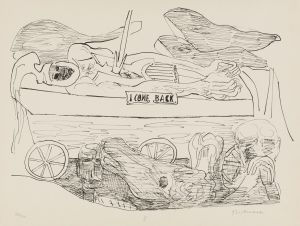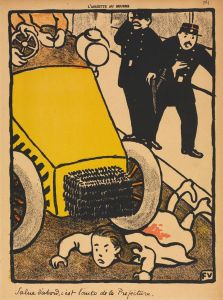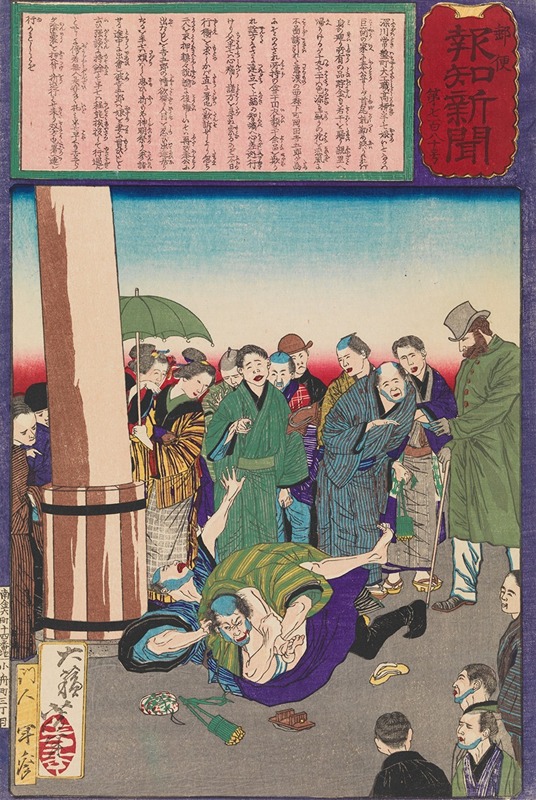
The Carpenter Hanshichi of Fukagawa Seizes His Daughter’s Attacker
A hand-painted replica of Tsukioka Yoshitoshi’s masterpiece The Carpenter Hanshichi of Fukagawa Seizes His Daughter’s Attacker, meticulously crafted by professional artists to capture the true essence of the original. Each piece is created with museum-quality canvas and rare mineral pigments, carefully painted by experienced artists with delicate brushstrokes and rich, layered colors to perfectly recreate the texture of the original artwork. Unlike machine-printed reproductions, this hand-painted version brings the painting to life, infused with the artist’s emotions and skill in every stroke. Whether for personal collection or home decoration, it instantly elevates the artistic atmosphere of any space.
"The Carpenter Hanshichi of Fukagawa Seizes His Daughter’s Attacker" is a woodblock print created by the renowned Japanese artist Tsukioka Yoshitoshi. Yoshitoshi, who lived from 1839 to 1892, is celebrated for his innovative approach to the traditional ukiyo-e art form, which flourished during the Edo period and continued into the Meiji era. This particular work is part of Yoshitoshi's series "Tsuki hyakushi" (One Hundred Aspects of the Moon), which was published between 1885 and 1892. The series is notable for its exploration of themes related to the moon, often drawing from historical, literary, and mythological sources.
The print depicts a dramatic scene involving a carpenter named Hanshichi from the Fukagawa district of Edo (modern-day Tokyo). In the artwork, Hanshichi is shown in the act of capturing an assailant who has attacked his daughter. This narrative is a reflection of Yoshitoshi's interest in human emotions and the complexities of human relationships, which are recurring themes throughout his body of work. The composition is dynamic, capturing the tension and movement of the moment, with Hanshichi's determined expression and physical stance conveying his protective instincts and resolve.
Yoshitoshi's "One Hundred Aspects of the Moon" series is characterized by its diverse subject matter, ranging from historical figures and events to supernatural tales and everyday life. The moon serves as a unifying motif, symbolizing various aspects of Japanese culture and human experience. In this series, Yoshitoshi employed a refined and expressive style, utilizing vibrant colors and intricate details to enhance the storytelling aspect of each print.
The artist's work is often seen as a bridge between traditional ukiyo-e and modern Japanese art, as he incorporated Western artistic techniques and perspectives while maintaining the essence of Japanese aesthetics. Yoshitoshi's prints are highly regarded for their technical excellence and emotional depth, and they continue to be studied and appreciated for their cultural and historical significance.
"The Carpenter Hanshichi of Fukagawa Seizes His Daughter’s Attacker" exemplifies Yoshitoshi's ability to convey powerful narratives through visual art. The print not only captures a specific moment of action but also reflects broader themes of familial duty, bravery, and justice. Through his masterful use of composition and color, Yoshitoshi invites viewers to engage with the story and the emotions it evokes.
Today, Yoshitoshi's works, including this print, are held in high esteem by art historians and collectors. They are featured in numerous exhibitions and collections worldwide, serving as important examples of the ukiyo-e tradition and its evolution during a period of significant cultural change in Japan.






